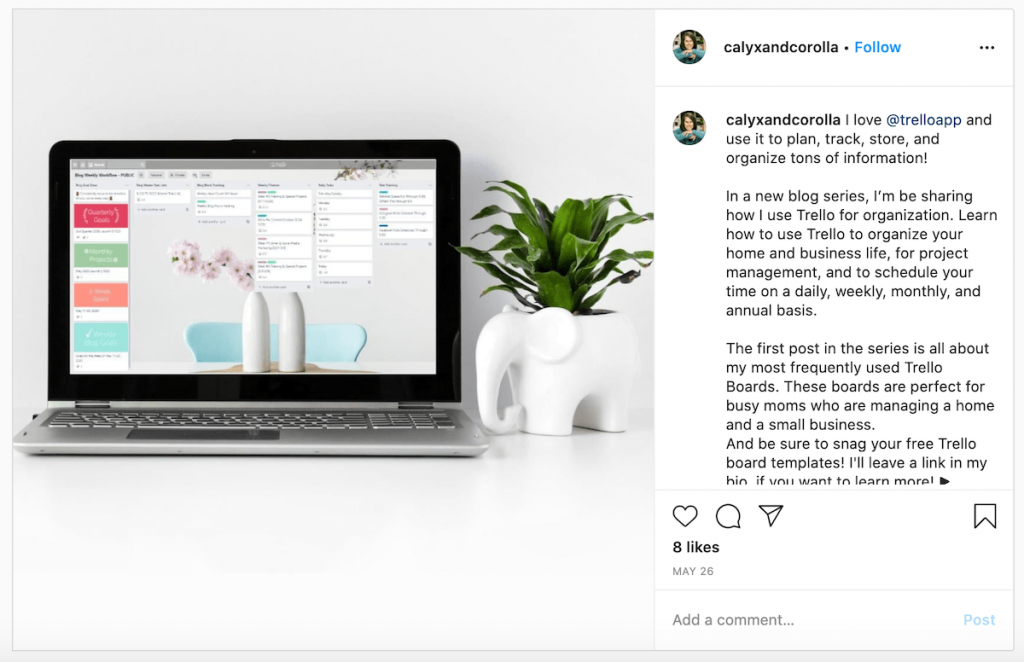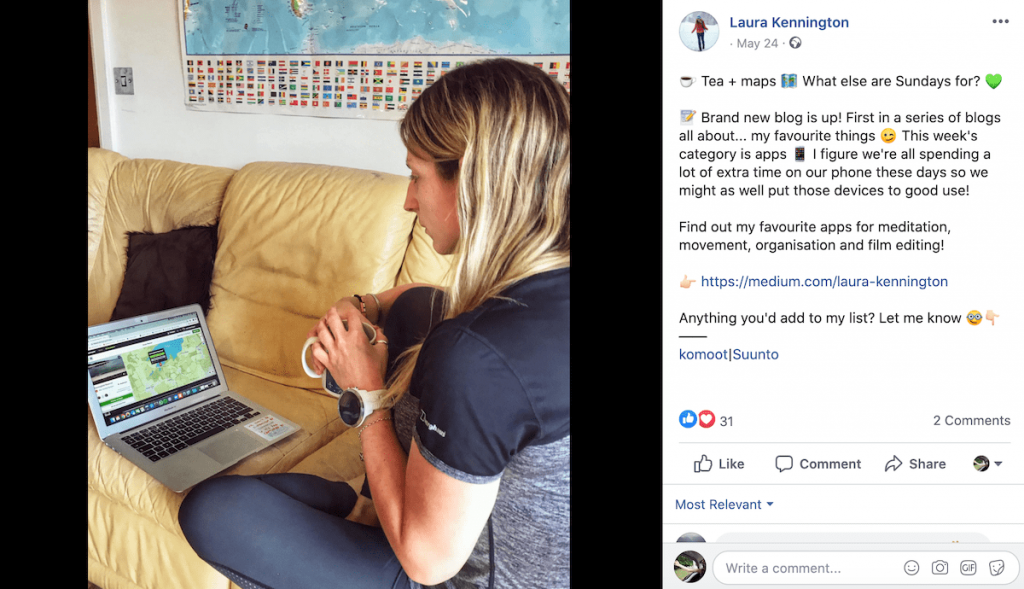What you need to know about affiliate marketing (+ 5 ways to promote your affiliate links)

If you’ve ever wondered how social media influencers and bloggers monetize their platforms to earn money, affiliate marketing is the answer you’ve been looking for.
For most businesses, affiliate marketing is an important marketing tool. Today, it’s one of the most common practices for promoting websites, products, and services. In fact, 81% of businesses leverage affiliate marketing as part of their marketing strategy.
The global affiliate marketing industry’s worth surpassed $12 billion as of 2019, and a 10% annual growth is projected by 2021.
At the end of this article, we’ll tell you about DeskTime’s affiliate program and how to join it. The good news? You don’t need to be an influencer to join the program and earn commissions. It’s enough if you’re a DeskTime user and willing to recommend it to others.
But before we get to the DeskTime affiliate program, here’s what we’ll be covering first:
- What is affiliate marketing?
- Why should you join an affiliate marketing program?
- Things to consider when choosing an affiliate product
- 5 strategies to promote your affiliate links
Want to get the most out of your time?
Try DeskTime for free!
Try free for 14 days · No credit card required.
By signing up, you agree to our terms and privacy policy.

What is affiliate marketing?
Affiliate marketing is the process of promoting someone else’s product(s) or service(s) in return for a commission for every customer referred to the business.
Brands create affiliate programs, which are free or of low cost to join, to enable people to become their ambassadors, also known as affiliates. The program generates unique referral links for each affiliate, which can be then shared and marketed online to drive consumer traffic back to the brand’s site.

Affiliate marketing follows a four-step cycle:
- Affiliates receive a unique link generated by a brand that they then share with their audiences
- A potential buyer clicks on the link, which takes them to the organization’s website or online store
- The organization records and traces the consumers’ buying journey back to the affiliate link using cookies
- The organisation rewards the affiliate with a commission for the purchase made by the customer who used the affiliate’s link
Why should you join an affiliate program?
Here are some valuable reasons to participate in affiliate marketing:
1. It creates a passive income stream
As long as any customer is able to see and click on the affiliate link, it can – at least in theory – generate commissions.
2. It’s free to join
Most businesses charge no money from affiliates to join their affiliate program.
3. You don’t have to be an inventor
Your job is not to create a new product or service. You don’t even need to actively sell anything— you are sharing and promoting an existing product or service to your network.
4. It’s a win-win system
Affiliate marketing benefits all parties that are involved in the process. The business receives promotion and gains new customers; the affiliate receives earnings from the business for referring customers to their site; and the customer discovers a product that satisfies their wants and needs.
5. Work as much or as little as you want
There are no strings attached when joining an affiliate program. If you choose to do a simple Instagram post or a tweet, so be it. However, it’s fair to say that the more effort you put into your promotional activities, the more it will pay off.
Things to consider when choosing an affiliate product
With thousands of different affiliate programs available, how do you choose the ones to join? Here are two suggestions to keep in mind:
One: Know your audience.
It’s the golden rule of marketing. If you have a gaming blog, it wouldn’t make sense to promote gardening equipment to your audience. It’s important to understand your audience’s needs and what they’re interested in.

Two: Pick a product you use yourself.
Avoid promoting products that you don’t use or would never use yourself. It’s important to know what you’re promoting because if a product doesn’t meet your expectations, it’s unlikely that it’ll meet the customer’s expectations. And if they buy it on your recommendation, they will not trust you again.
5 strategies to promote your affiliate links
Simply copy-pasting a referral link on your online platform or social media profiles may not be effective enough to gain your follower’s attention and interest in what’s being promoted to them.
To be successful in your affiliate marketing efforts, you must do the work that lies in the promotional activities. Just as it is in marketing in general, it is important to understand what the needs and wants of your following are, how to gain their attention, and how to influence them to make a purchase.
Here are some of the many ways you can promote your affiliate link to your audience:
Write a blog post
Blogging is probably one of the most efficient ways to promote your affiliate links.
With blogging, you build an audience interested in your expertise surrounding a specific type of content. By creating consistent and credible content, your audience will deem you as a credible source for advice and recommendations. Therefore, you increase the chances that your audience will trust the products or services you use and promote through your affiliate links.
Affiliate links with complementary content is an effective way to encourage customer purchasing behavior.
For example, if your blog is about work productivity or related topics and you discuss tools for boosting productivity, you can incorporate your affiliate links for products that boost work productivity. This ensures organic promotion and encourages the customer to try the recommended tools.

Promote an affiliate link on your website
If you have a website, you can use it to promote your affiliate products with targeted ads to your visitors.
One of the most common ways to promote your affiliate links is through banner ads. It’s a way to catch visitor’s attention on the website, and it can be used to direct visitors straight to the merchant’s site or a blog post that provides more information on the product. So, if you own a website, consider incorporating banners in your website design that are in sync with your audience’s interests.
Also, if you own a website, encourage visitors to subscribe to your email list, so you can send direct marketing campaigns (with affiliate links!) to their inboxes.
Use email marketing
Email marketing has been a go-to marketing tool since the dawn of internet shopping, and research shows that 99% of consumers check their emails daily. This makes it worth taking advantage of. This also concerns important elements such as using catchy email subject lines to attract and acquire new prospects.
Start with growing your email list, then engage with your subscribers by sending them relevant and personalized campaigns. From time to time, include your affiliate links in your campaigns. To maximize the impact of your email marketing efforts, use email verification tools, which will ensure that you maintain a list of valid and engaged subscribers.
Pro tip: Use your email list to inform your subscribers about your latest blog posts where your affiliate links are included.

Looking for ways to up your business?
Our all-in-one team management solution is smart, cost-effective, and gives fast results!
Share your affiliate link on social networks
Chances are that you are already a user of at least one social networking site.
In 2020, it is reported that globally social networking is set to reach 3.5 billion users. That’s nearly half of the world’s population; therefore, social networks can provide an invaluable platform for affiliates to promote their referral links to their friends and followers.
Here are the two of the most common ways to promote affiliate links on social media:
One: Write a short review.
Use your social networking platforms to tell your audience about the product and your experience with it. Tell your followers what you like about it, how you use it, and why others may want to use it. Then refer them to become customers and users of the product themselves.
Two: Redirect the reader to your blog.
Followers tend to be discouraged reading lengthy posts on social media. Therefore, instead of writing a long review, you can encourage your followers to read your review on your blog where the affiliate link is located.
Here are more ways to engage your social media followers, depending on the platform you use the most:
1. Instagram
With over 1 billion active users a month, Instagram is an ideal platform for promotional activities. Case in point: 72% of Instagram users have stated that they’ve made a purchase they came across on the platform.
Use Instagram to showcase pictures or short videos of the product or service you’re offering so that the customer sees the product in use.
To enhance the post, use the description box to tell your audience about the product and its use, and how it will benefit the buyer. Remember to add the referral links so the customers know where they can purchase the product.

2. Twitter
Even though Twitter only allows 280 characters per tweet, it still gives you an opportunity to create interest in your followers and direct them to the merchant’s page.
Accompany your affiliate link with an image of the product or brand promoted. Research by Buffer stated that tweets with images influence 18% more clicks, 89% more likes, and 150% more retweets than text-only tweets. In other words , using images leads to increased engagement and further promotion.
3. Facebook
With 2.45 billion active monthly users, Facebook is the largest social media platform on the web.
Besides sharing a product review or a link to a blog post that includes affiliate links, you can also go the extra mile and use Facebook ads to reach a wider audience with sponsored posts.

4. LinkedIn
Although LinkedIn is a profession-based social network, it is still a network of different audiences that use the platform to share and read personal experiences, discussions, and recommendations.
By making connections with professionals and people with shared interests, you can use your LinkedIn profile to promote your affiliate products in a long-format post or by sharing a link to an article on your blog.
5. YouTube
People turn to YouTube for guides and information on products and services. In fact, YouTube now is the 2nd largest search engine on the world wide web. People spend on average 1.5 hours a day watching video content that is relevant to their interests which plays an integral part in their decision making journey.
People are four times more likely to watch a product video than to read about it. Making product reviews and how-to guides can serve as a great tool for promoting affiliate products, as customers use YouTube videos to obtain more detailed information and to see what other customers’ experiences with products and services are. It drives more engagement and creates credibility for the value in the products or services.
Remember to add product links in the description box for viewers to direct them back to the merchant.

Invest in paid advertising
Investing in paid advertising allows you to reach audiences on a wider scale and increases traffic to your web page.
Facebook, Google AdWords, Twitter, LinkedIn and similar sites have their own ad targeting tools, so there are plenty of platforms to invest in to make sure your affiliate campaigns gain visibility.
Use these ad tools to direct people to your blog where your affiliate links are located. Similarly, you can use the paid ads to direct the customer straight to the merchants page using your affiliate links.
About DeskTime’s affiliate program
DeskTime is one of the best time tracking apps on the market, trusted by over 184k users in 203 countries.
Used by business owners, managers, freelancers and CEO’s, the app offers service features such as time tracking, auto screenshots, project tracking, and more. You can find out more about all of DeskTime’s features here.
How to get started with the DeskTime affiliate program
- Join for free! Sign up to receive your unique affiliate link to share with your audiences.
- Receive free marketing resources when you sign up to become a DeskTime affiliate. You’ll get access to free banners, images, visuals and other marketing materials. DeskTime will also provide useful affiliate marketing tips in a dedicated email series.
- Track your performance through your DeskTime account. See accurate stats on how you’re doing, how much money you’ve made, and when the next payment is going to be.
- Receive a 30% commission. After you refer at least 2 customers, you will receive a 30% commission for 9 months after their first payment. Refer as many customers as you want and get paid for every new one that makes a purchase.
- Get paid. Once you’ve earned $25 or more, DeskTime will transfer your earnings through PayPal.
Want to get started? Click here to learn more about Desktime and its affiliate program, and learn more about DeskTime’s affiliate terms and conditions here.
About the author
Roberts Vildavs is an International Marketing Student at Glasgow Caledonian University. He has worked as a marketing consultant through his university program and aspires to pursue a career in branding and brand management. You can find Roberts on LinkedIn.
Did you find this article useful? Give it a clap!
Psst! You can clap more than once if you really loved it 🙂